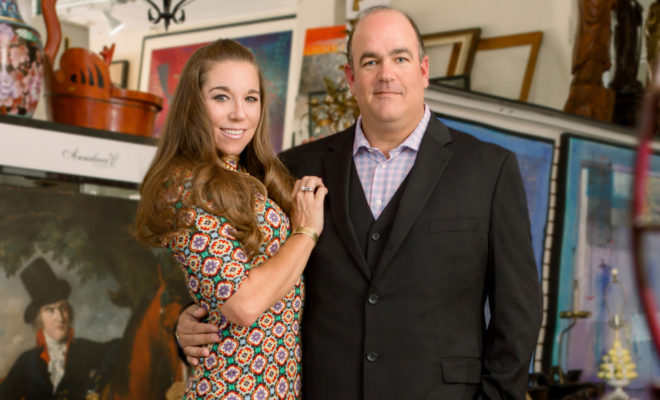
Arts & Culture
Andrew Ford: The Art of Discovery
By Gus Mollasis
Art and antique aficionado Andrew Ford loves to hunt for treasure. Just like the explorers of old, his head and instincts guide him around the globe to find treasures of great beauty and value.
And when you consider his life, it makes total sense.
Ford is originally from Marion, outside of New Bedford, Massachusetts on the shores of where the great whaling fortunes were made. Shores where, as a boy, he played with Carlos Melville, great-great-grandson of author Herman Melville. And like Captain Ahab from the Melville classic Moby Dick, Ford is always seeking his white whale. The hunt for the good stuff excites him.
Ford’s eye for treasures is a gift, something he cultivates not only with insatiable curiosity, but by continuously educating himself on anything do with fine art and antiques. His expertise on the history and value of the treasures that he finds or that come through the door of his business have helped him earn the trust of his clients, forge great relationships, and a lasting, successful business. Plus, there’s so much history just in his family. He has relatives who fought in the American Revolution and lost family members on the Titanic.
He also knows a thing or two about beauty. Ford is married to the beautiful and statuesque Lathrop Ford, a self-taught artist who specializes in children’s portraits. The two form quite a pair and can be seen together at their eclectic fine art and antiques gallery, Sarasota Trading Company (522 S Pineapple Ave/941.953.7776), where treasures from around the world are beautifully displayed in the heart of Downtown Sarasota.
You’ll also find the Fords together at their Sarasota Estate Auction every month on a Sunday afternoon auctioning off many of the treasures that people have entrusted to them. If you’re fortunate enough to be on the road with them, whether it be an antique show in The Hamptons, an art show in South Beach or a trip to the Orient, this powerful pair are always in pursuit of the good things in life.
In his business, Ford receives a lot of calls from around the world. Sometimes the call is not special, but oftentimes it is. When his phone rings, anticipation builds. Could it be his white whale? Not long ago, when his cell phone rang, he couldn’t help but smile. “Of course, I’m interested. Sure, it’s worth a trip. I’ll fly up and take a look.”
Would it be a fishing expedition? Maybe. But this call came from a trusted source, someone he knew for many years. It was time for the mild-mannered Ford to go on the hunt for his white whale of a treasure.
You’ll never know by his demeanor if he’s excited or not. It’s the negotiator in him—a skill that, in his business, is as important as his eye for the good stuff. Some call it the art of the deal. For others, it’s something they feel in their gut. Ford is no different. He lives on his wits. He knows when to pull the trigger and when to pass. Sure he’s had his share of regrets and missed opportunities. With a smile, he’ll tell you that’s all part of the game.
The recent phone call was no game. It was serious business. On the other end of the call was an opportunity. A huge opportunity. A huge estate. White whale huge. The find was on land, in Richmond, Virginia, and had the promise all seasoned treasure hunters dream about. And while his journey wasn’t as big as the spice routes that encouraged the discovery of new lands, he remembers it was with “spices in mind” that Christopher Columbus set out in 1492 and ended up discovering America. You just never know. The excitement of opportunity began as Ford boarded the plane for Richmond. The “spices in his mind” were turning. He couldn’t wait to see what he would soon see.
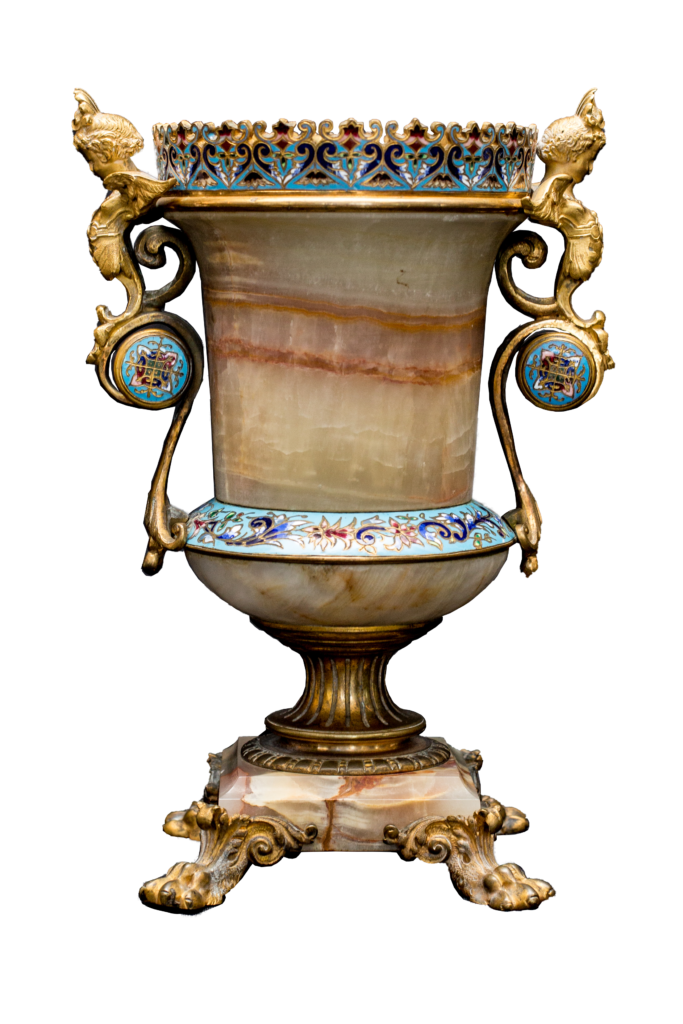
A RICHMOND ESTATE
“As I pulled in, it was exactly the kind of setting I anticipated. Long, arching driveway culminating with this big, beautiful home. Now it’s looking more real to me,” says Ford.
“The minute the doors were opened, I realized the enormity of the collection which contained hundreds of Chinese sculptures, most sitting in unopened boxes in the front entrance, the hallway and the big living area. It was a grand-style home with two staircases. The collection was just what he told me it was.”
Ford quickly knew this was a great opportunity, realizing that these works of art had never been explored and that no one had gone through them. The home contained what every antiques explorer seeks, an undiscovered territory filled with treasure.
Expecting to spend three or four hours looking through the collection, he was done searching in about an hour. There were over 600 boxes. He had planned to go through 30 of them but stopped way before opening even 30 boxes. He had already made up his mind. Somehow, he had to own this collection.
“I didn’t want to look too ambitious, so I didn’t go into every box,” says Ford. “You do your very best to give them the impression that you want to do business, but you don’t have to.”
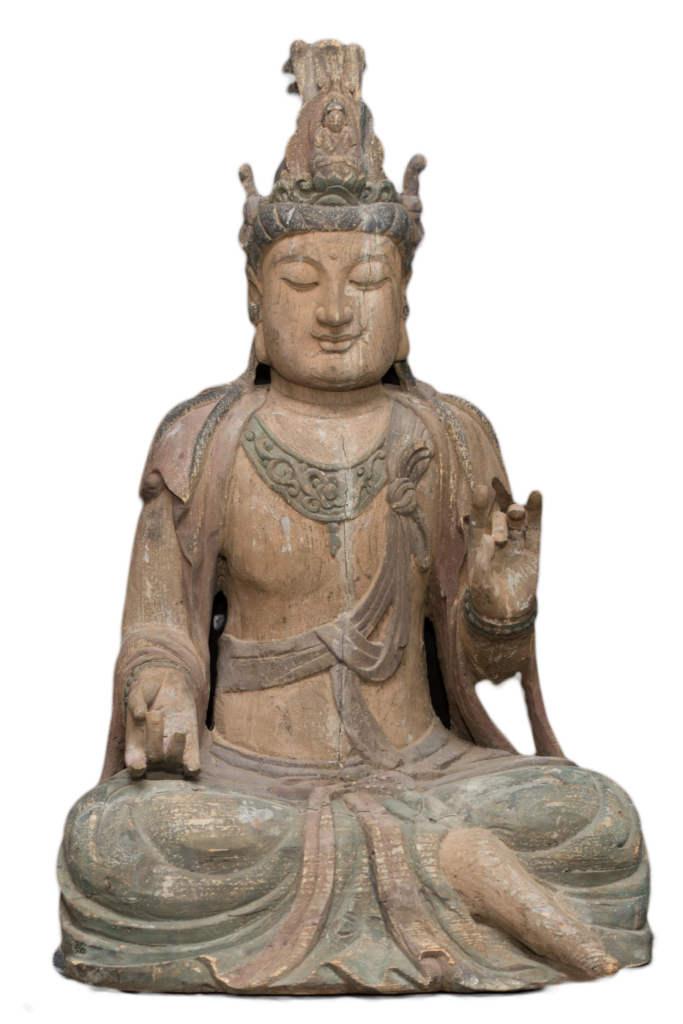 One of the boxes Ford examined was a collection from the Hoi An Hoard, a Vietnamese salvage company that he immediately recognized. History had documented that during the 15th century, a trading vessel with porcelain vanished without a trace off the Hoi An coast of Vietnam in the South China Sea. Some 500 years later, with the wreck in their harbor, the Vietnamese salvage effort began. First funded by private money, they eventually partnered with the Vietnamese government realizing they’d have to legally lift up these treasures and the government could protect it as a wreck site.
One of the boxes Ford examined was a collection from the Hoi An Hoard, a Vietnamese salvage company that he immediately recognized. History had documented that during the 15th century, a trading vessel with porcelain vanished without a trace off the Hoi An coast of Vietnam in the South China Sea. Some 500 years later, with the wreck in their harbor, the Vietnamese salvage effort began. First funded by private money, they eventually partnered with the Vietnamese government realizing they’d have to legally lift up these treasures and the government could protect it as a wreck site.
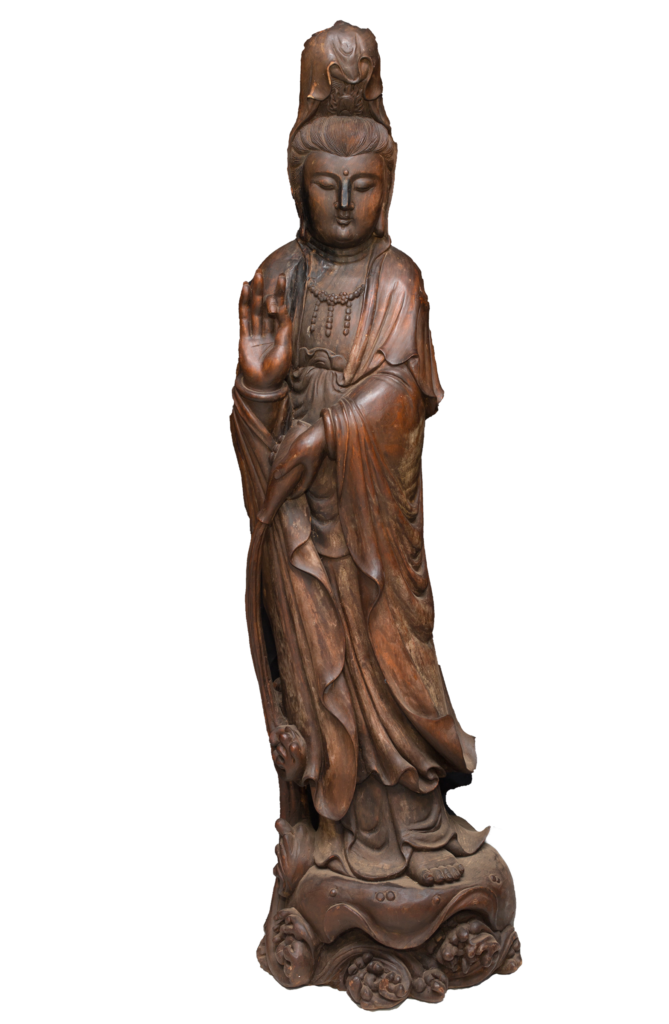 “Over 100,000 pieces came from this area,” says Ford. “They were cataloged and sold through Butterfield’s auction in San Francisco, but it was only 20% of the collection. The Vietnamese government kept the best pieces for its museums to build their own tourism as people clamored to see these porcelain collections.”
“Over 100,000 pieces came from this area,” says Ford. “They were cataloged and sold through Butterfield’s auction in San Francisco, but it was only 20% of the collection. The Vietnamese government kept the best pieces for its museums to build their own tourism as people clamored to see these porcelain collections.”
The collection in Richmond consisted of some of these finds that were bought through auctions. They were all stickered and identified as part of the Hoi An Hoard. Trying to ascertain the value of this collection is something that Ford makes a living doing, yet these were uncharted waters.
“Remember, I never met the gentleman who owned this collection,” says Ford. “I was dealing with a third-party broker, who had appraised the collection and was working for the family to sell the collection. With his appraisal done, his goal was finding perspective buyers and perspective auctioneers.”
Ford was both — a potential buyer and auctioneer.
THE POKER PLAYER
The broker asked Ford what he thought. He paused and put on his best poker face. “It’s certainly an impressive and large collection, however a lot of this is decorative. There are some early pieces here, but the majority of it is what we call Republic period pieces.”
 The Republic pieces (1912-1949) were from the Republic of China after the Ching Dynasty. “Honorific pieces,” says Ford, “that have come into fashion today. Thirty years ago it had little value. Beautiful porcelains but not collected like today. Early Chinese antiquities are gone now. There aren’t many Ming Dynasty porcelains out there. All collectors can get now are late Ching and early Republic pieces. Today those pieces have gone through the roof.”
The Republic pieces (1912-1949) were from the Republic of China after the Ching Dynasty. “Honorific pieces,” says Ford, “that have come into fashion today. Thirty years ago it had little value. Beautiful porcelains but not collected like today. Early Chinese antiquities are gone now. There aren’t many Ming Dynasty porcelains out there. All collectors can get now are late Ching and early Republic pieces. Today those pieces have gone through the roof.”
So, when Ford saw the Hoi An Hoard pieces, he knew he had to get the collection. He envisioned all of these boxes being from the Hoi An Hoard. It turned out that wasn’t the case, but there were fabulous pieces, endless amounts of bronze statues and sculptures.
Even after Ford went through a few more boxes, no deal was made at the house. Both Ford and the broker headed to the airport for their respective flights.
Both wondered if their deal was history.
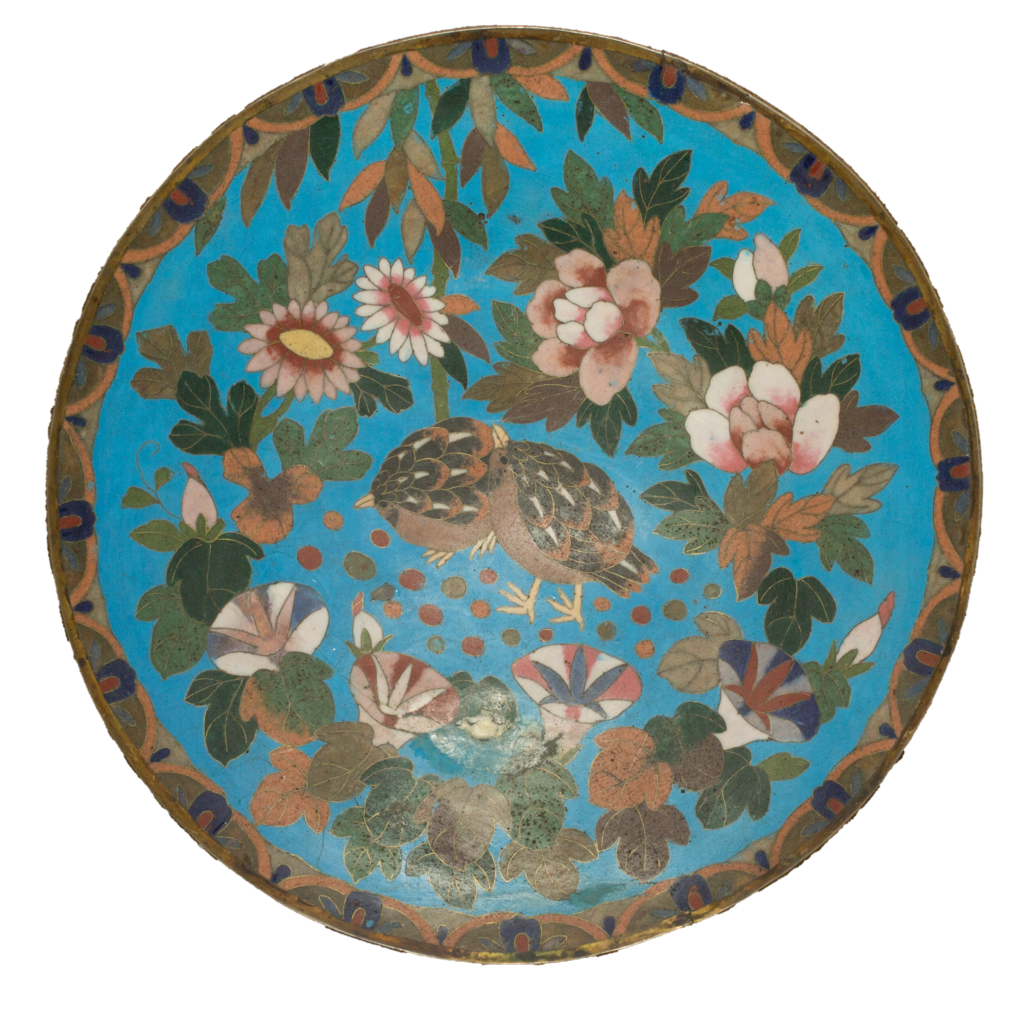
FATE LENDS A HAND
Ford was on his way to Sarasota with no deal, no art and no antiques.
“I knew the estate was open to me coming in as an auctioneer or purchasing the whole collection. One way or another they wanted to empty out this 16,000 square foot home which had been in probate for over a decade with Uncle Sam.”
You don’t have to know Ford long to know what he was thinking on his journey to the airport. How could he make this deal?
A rainstorm intervened and canceled both Ford’s and the broker’s flight. They would have an extra two hours in the airport looking at each other. Face to face. Sitting in those airport chairs that aren’t that comfortable and don’t move. Both men were no doubt wondering who would make the first move.
“We started chatting and I told him that I didn’t know if auctioning would be the best way to handle this collection,” says Ford. “I told him that if I was going to be able to purchase the collection, I didn’t want to be responsible for the transfer of these goods, and that if they could get them to my auction house then we could do business.”
“Realizing the expense and to avoid all the unknowns, he looked at me and said, ‘I could also bring the family an offer, if you had one in mind.’ I told him I would give him an offer the following week knowing that if I lowballed him, he would dismiss me and move on the someone else.”
Ford wondered if the broker, since he had appraised the collection, was an insurance appraiser or a fair market appraiser. Just by looking at all the stacked boxes of the collection, he knew the broker hadn’t looked though much of the collection. Much was unknown. But Ford did know that parts of the collection included some beautiful French pieces purchased at Sotheby’s that were not included with the Chinese collection.
The broker hinted that, should they do business, Ford must make an offer on the French pieces and the Oriental rugs as well. “Now I’m realizing I have to make a strong offer,” says Ford. “I knew it had been appraised in the ballpark of $400,000.”
Forever the passionate pragmatist, Ford thought about it, but not for too long. He knew that the flight delay placing both of them at the airport was indeed a fateful one. But it was also an opportunity that he didn’t want to miss.
The broker also told him that they had other auction houses and private buyers who were coming to view the collection over the next month or two. Ford knew the broker was “working him”, but Ford also believed him. He knew if he wanted the collection that he had to do something over the next week or two. He would eventually make him an offer that the family couldn’t refuse and one that he could live with as well. “My number was south of the ballpark, but where I was comfortable.”
Who could have ever predicted that Ford would come to an airport to land his white whale—the biggest collection he’s ever been a part of?
“It starts with the gut. A little bit of intuition. Knowledge to know this is an opportunity. I try not to look back on a decision. When I find that opportunity I have to do something and I do it,” says Ford. “While I wasn’t afraid of the investment, I was more concerned with the execution of physically acquiring the collection through a lot of man hours and logistics. I knew it would dominate my life and has done so for more than a year now. But, in a good way!”
With a deal secured, Ford headed on the road with his team to collect their white whale.
“You learn a lot through osmosis and packing all these items. By the time we got back to Sarasota, I knew what we had and was excited about the collection, as was my entire team.”
Since acquiring the collection, Ford has sold pieces to collectors, institutions and museums, as well as to overseas buyers in over 20 countries. “An Asian environment has been created at Sarasota Trading that everyone who comes in enjoys. It’s also given me depth in a new area that is particularly interesting in today’s art world,” says Ford.
It took the family who originally owned the collection more than 30 years to gather. There are many spiritual type pieces within this collection—like Buddhas, Quan Yins and Bodhisattvas.
Ford says, “Every home should feature at least one Buddha, Bodhisattva or Quan Yin. It’s very important in Chinese culture, both spiritually and symbolically, representing gods of longevity and gods of fortune.”
Fortune. Luck. Ford doesn’t count on them.
“There’s no hour glass telling you when something is finally going to sell and when you’re going to get your profit. With some paintings I’ve bought, it’s taken years. With this collection, I knew there were going to be a few objects that were going to turn the tables for me in a positive direction.”
What appeals to Ford most about the business?
“Meeting new people. Moving finds from one estate and finding them a home in another estate. Then hearing back from those same people who are now so appreciative and inspired to collect other things. It’s all part of getting people interested in collecting. That’s my passion.”
“To me everything I look at in the antiques world is an opportunity that involves cost analysis. Would I rather have the 100-dollar bill, or would I rather have the Asian tea cup? You weigh that—where you want to put your money. How long it’s going to take you to get in and out and what the journey’s going to be.”
No matter who the treasure-seeking explorer, or the direction they’re heading – East to West or North to South – in Sarasota, the route for Asian treasures points in one direction and to one place – Sarasota Trading. There you’ll find a very knowledgeable and proud explorer and his crew who can provide you with a map to all the Asian treasures you’re looking for.



You must be logged in to post a comment Login